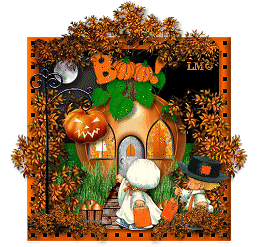
An American Werewolf in London
In the last post, we learned about the Psychopharmacology of Lycanthropy (and "endogenous lycanthropogens") from the April 1, 1992 issue of the Canadian Medical Association Journal (Davis et al., 1992). In a more serious review on clinical lycanthropy in the British Journal of Psychiatry Coll, O'Sullivan, and Browne (1985; PDF) began by stating:
Lycanthropy is the delusion in which an individual believes he has been transformed into an animal, traditionally a wolf. Descriptions of this syndrome are found in the earliest medical writings such as those of the Greek Paulus Aegineta in the seventh century A.D. (Adams, 1844). There is also a biblical description of the syndrome in the Book of Daniel. Nebuchadnezzar (605-562 B.C.), the king who rebuilt Babylon, succumbed to a lycanthropic state after suffering from an apparent depressive illness for seven years.

Nebuchadnezzar, by William Blake
In his 1621 magnum opus, The Anatomy of Melancholy, Robert Burton (aka Democritus Junior) explained it thusly (in Part 1):
Lycanthropia, which Avicenna calls cucubuth, others lupinam insaniam, or wolf-madness, when men run howling about graves and fields in the night, and will not be persuaded but that they are wolves, or some such beasts. Aetius and Paulus call it a kind of melancholy; but I should rather refer it to madness, as most do. Some make a doubt of it whether there be any such disease. Donat ab Altomari saith, that he saw two of them in his time: Wierus tells a story of such a one at Padua 1541, that would not believe to the contrary, but that he was a wolf... And Nebuchadnezzar in Daniel, as some interpreters hold, was only troubled with this kind of madness. This disease perhaps gave occasion to that bold assertion of Pliny, some men were turned into wolves in his time, and from wolves to men again: and to that fable of Pausanias, of a man that was ten years a wolf, and afterwards turned to his former shape: to Ovid's tale of Lycaon, &c.Not surprisingly, the modern-day diagnosis given to individuals afflicted with this delusion is usually a psychotic disorder in the context of schizophrenia (Fahy, 1989), severe depression (Coll et al., 1985; Rao et al., 1999; Younis & Moselhy, 2009), or bipolar disorder (Verdoux & Bourgeois, 1993).

Benicio del Toro stars in The Wolfman, to be released in Feb. 2010.
However, imaginary transmogrification isn't restricted to the lupine variety. A comprehensive review of the literature between 1966–2002 (Garlipp et al., 2004) identified 21 articles, primarily case studies:
In the current medical literature man–animal metamorphoses were described concerning the following animals: wolf/werewolf, dog, gerbil, rabbit, horse, tiger, cat, bird, unspecified animal species, frog and bee. In Asia, Africa and South America, metamorphoses in tiger, hyena, crocodile and shark were observed.The authors mention that the specifics can be influenced by cultural factors. But then they deliver the psychodynamic perspective promised in the review's title (and a bit of condescension):
The symptomatology can be seen as a continuity spectrum of developmental and culture dependent normal behaviour via transitional – a fantasy of an artist – and partial forms to the whole picture of lycanthropy described by Keck et al. (1988). The length of transformation is usually short, symptomatology has mostly disappeared in a week's time. People who live in preindustrial societies and people living on isolated countrysides are predisposed. Other precipitating factors seem to be subconscious sexual conflicts.Finally, they end with precipitating psychopathology:
Lycanthropic symptomatology can be seen in different mental diseases. Most of the patients suffer from an affective disorder or from schizophrenia. Furthermore, the man–animal metamorphosis can be seen after the intake of psychotropic substances including cannabinoids as well as alcohol abuse. Rarely, lycanthropy is reported in personality disorders. Case reports can be found concerning organic psychosyndromes, dementia and epilepsy.We'll end with an article from the Canadian Journal of Psychiatry, on two unusual case reports (Gödecke-Koch et al., 2001):
Case Report 1It's nearly a full moon, but somehow the idea of human/frog hybrids (and human bees, if not in swarms or of the killer variety) isn't all that scary.
A 34-year old woman suffering from schizophrenia came to the emergency department. At first, she was mutistic; later she seemed agitated and tense. Suddenly, she started moving like a frog, jumping around, making frog-like noises, and showing her tongue as though in tend ing to catch a fly. We found out that she had taken part in a workshop about fairy tales prior to becoming symptomatic. An organic cause was excluded, and no drug intake was found. Case report 2A 24-year-old woman suffering from schizophrenia reported a strange feeling that could not be properly described, together with the feeling that she was becoming a bee and getting smaller and smaller. She also felt a burning sensation in her thighs. She attributed her metamorphosis to her being stung by bees as a child and the “splashes of bee” that had touched her. ... No organic causes could be found, and drug screening tested negative. To date, the metamorphosis into a frog or a bee has not been described in the medical literature.
References
Coll PG, O'Sullivan G, Browne PJ. (1985). Lycanthropy lives on. Br J Psychiatry 147:201-2. [PDF]
Fahy TA. (1989). Lycanthropy: a review. J R Soc Med. 82:37-9.
Garlipp, P., Gödecke-Koch, T., Dietrich, D., & Haltenhof, H. (2004). Lycanthropy - psychopathological and psychodynamical aspects. Acta Psychiatrica Scandinavica, 109 (1), 19-22. DOI: 10.1046/j.1600-0447.2003.00243.x
Gödecke-Koch T, Garlipp P, Haltenhof H, Dietrich DE. (2001). Lycanthropy: 2 case reports. Can J Psychiatry 46:659.
Rao K, Gangadhar BN, Janakiramiah N. (1999). Lycanthropy in depression: two case reports. Psychopathology 32:169-72.
Verdoux H, Bourgeois M. (1993). A partial form of lycanthropy with hair delusion in a manic-depressive patient. Br J Psychiatry 163:684-6.
Younis AA, Moselhy HF. (2009). Lycanthropy alive in Babylon: the existence of archetype. Acta Psychiatr Scand. 119:161-4

























